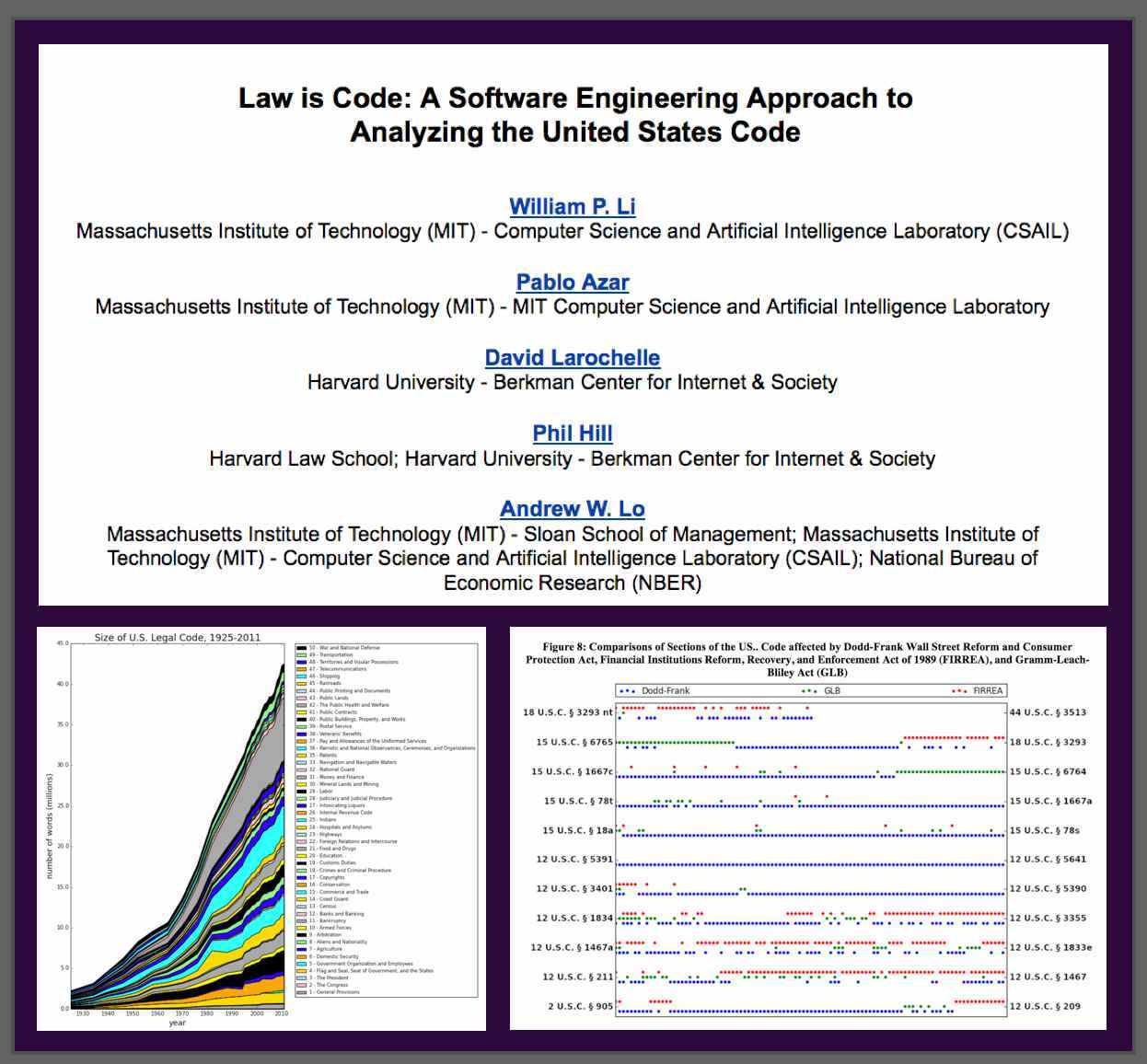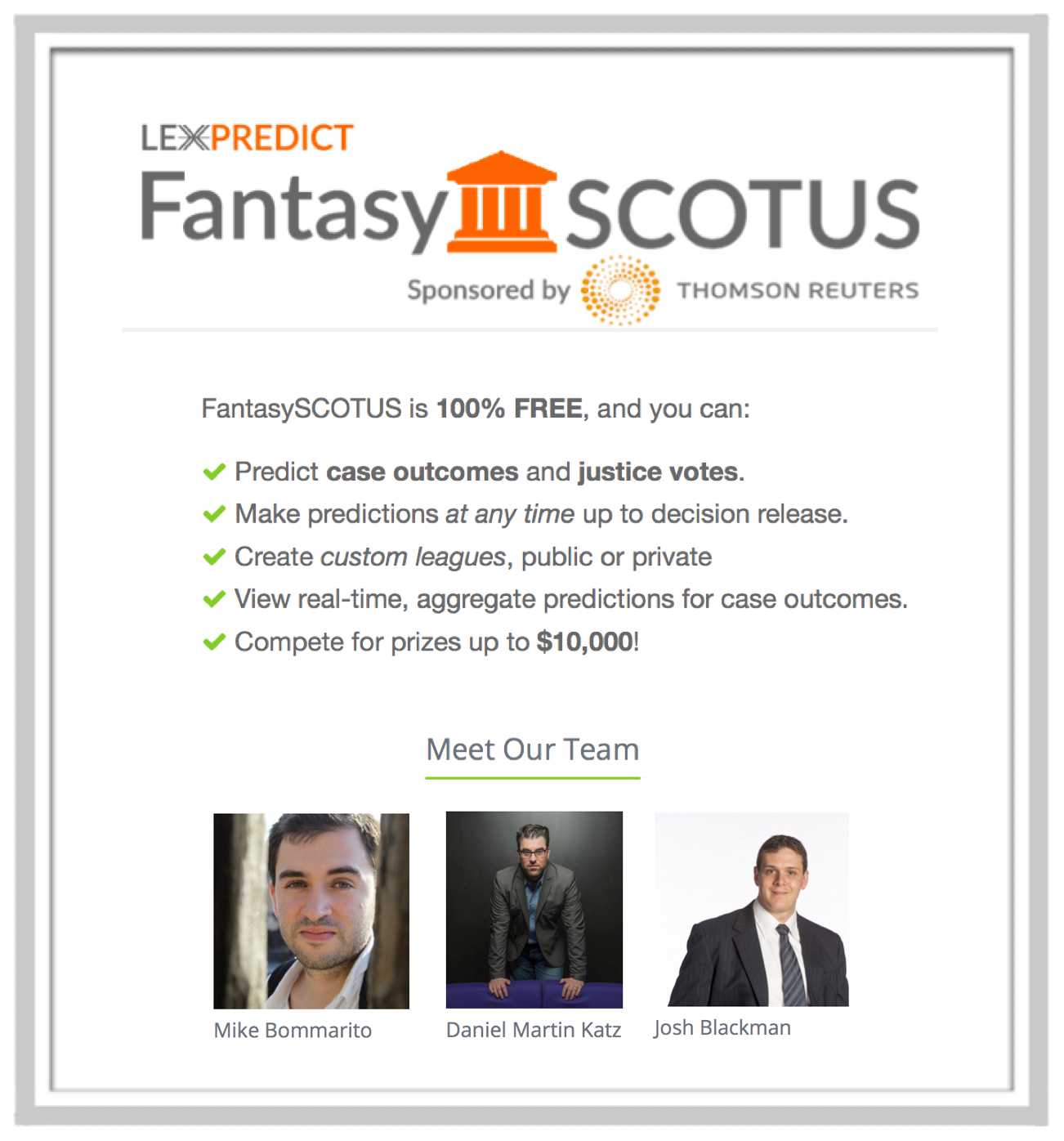 William Li, Pablo Azar, David Larochelle, Phil Hill & Andrew Lo, Law is Code: A Software Engineering Approach to Analyzing the United States Code
William Li, Pablo Azar, David Larochelle, Phil Hill & Andrew Lo, Law is Code: A Software Engineering Approach to Analyzing the United States Code
ABSTRACT: “The agglomeration of rules and regulations over time has produced a body of legal code that no single individual can fully comprehend. This complexity produces inefficiencies, makes the processes of understanding and changing the law difficult, and frustrates the fundamental principle that the law should provide fair notice to the governed. In this article, we take a quantitative, unbiased, and software-engineering approach to analyze the evolution of the United States Code from 1926 to today. Software engineers frequently face the challenge of understanding and managing large, structured collections of instructions, directives, and conditional statements, and we adapt and apply their techniques to the U.S. Code over time. Our work produces insights into the structure of the U.S. Code as a whole, its strengths and vulnerabilities, and new ways of thinking about individual laws. For example, we identify the first appearance and spread of important terms in the U.S. Code like “whistleblower” and “privacy.” We also analyze and visualize the network structure of certain substantial reforms, including the Patient Protection and Affordable Care Act (PPACA) and the Dodd-Frank Wall Street Reform and Consumer Protection Act, and show how the interconnections of references can increase complexity and create the potential for unintended consequences. Our work is a timely illustration of computational approaches to law as the legal profession embraces technology for scholarship, to increase efficiency, and to improve access to justice.”
Mike and I are excited to see this paper as it is related to two of our prior papers:
Daniel Martin Katz & Michael J. Bommarito II, Measuring the Complexity of the Law: The United States Code, 22 Journal of Artificial Intelligence & Law 1 (2014)
Michael J. Bommarito II & Daniel Martin Katz , A Mathematical Approach to the Study of the United States Code, 389 Physica A 4195 (2010)



 From the Abstract
From the Abstract
